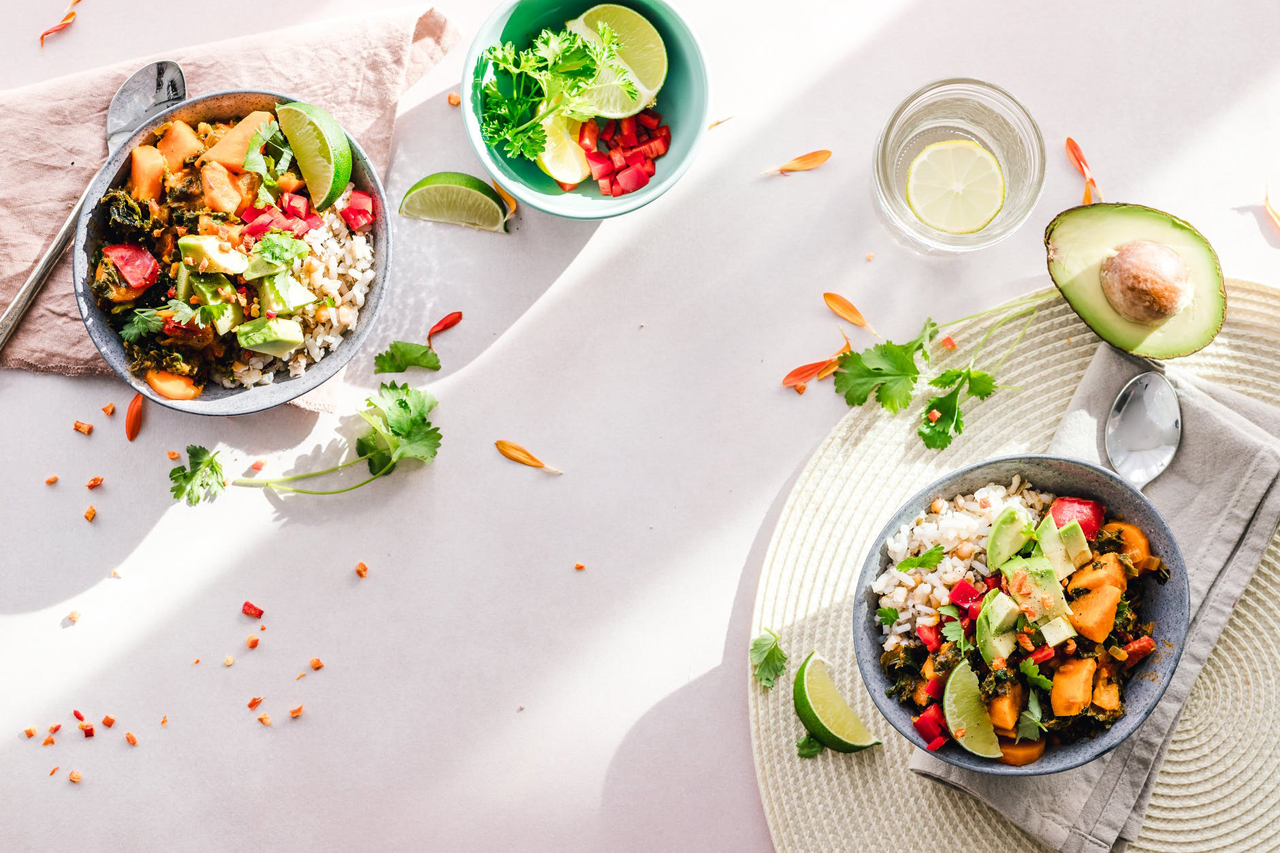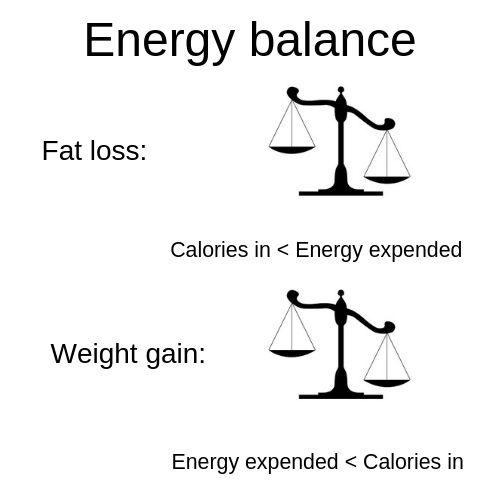
Calories in vs. calories out
There are so many diets out there which all claim to be the miracle remedy for fat loss. So how do we know which diet to choose? The answer is none! Yeah, you read right, unfortunately, there is no magical diet, pill or potion that can cause fat loss. But why does following a certain diet work for some people you may ask? The theory is actually quite simple. Each diet that you come across has one main focus = limiting certain foods or macros (Macros – carbs, fat, protein). Green juice detoxes, cabbage soup, atkins, keto, low carb, low fat, low sugar diets, even the growing popularity of intermittent fasting all have one thing in common – creating a calorie deficit.
“A calorie deficit is any shortage in the number of calories consumed relative to the number of calories required for maintenance of current body weight. A deficit can be created by reducing input/calories consumed. A deficit can also be created by increasing output without a corresponding increase in input.”
In simple terms, if energy/calories consumed outweighs the total number of energy/calories burnt. Then you will create a calorie surplus which is likely to lead to weight gain. Whereas when energy/calories out outweighs the number of calories consumed you will create a calorie deficit which can help aid weight/fat loss.
This energy balance equation can work both ways as demonstrated in the image below:

Now it is clear on what a calorie deficit is. The next step is to calculate how much of a calorie deficit is most beneficial for you and your specific goals. Whilst there is no “one size fits all” remedy as we are discussing fat loss, it has been found that 3500 kcal equals one pound of fat. If we divide this number over 7 days this suggests that being in a 500 kcal daily deficit will cause a loss of one pound of fat per week.
Easy right? Whilst this formula appears to be simple, as previously stated this may not work for everyone. It depends on individual needs, goals, target frames, activity levels, body composition, etc. Here is a link to a handy calculator which does all the tricky calculations out for you and can help you to figure out the ideal calorie deficit.
Calorie targets/ Macros
Ever heard of the phrase “fat loss food”? Whether the answer is yes or this is the first time hearing it, sorry to inform you that this is again another myth. You can consume all the blueberries, apple cider vinegar, coconut oil, and green teas that you like. There is no guarantee they will bust that stubborn belly fat as promised. Again it all comes down to the most important factor – calorie deficit.
For example, if your target amount of calories for fat loss is 1500 kcal/day and you eat this amount of calories from pizza for a week then you may see a weight loss reduction. Whereas if you were to eat 2000 kcal/day worth of salads daily for a week, although there would be better health benefits you would still be overeating in terms of your goal so you are likely to experience weight gain.
Neither of these is recommended. They are unlikely to be sustainable and are not particularly healthy habits. They do not provide your body with a variety of macro and micronutrients. This is typically the issue with most diets as they restrict certain foods that our bodies require for optimal functioning.
Let’s take a look at the Keto diet. Whilst there are numerous success stories from this specific diet it cuts out one of the bodies main sources for energy, carbohydrates. The main reason low carb diets such as Keto have gained such popularity is due to the quick results people have experienced. This, however, is mainly due to the body’s release of water weight once it has depleted its carbohydrate stores. Again it is unlikely that this is sustainable and also not convenient for most lifestyles as carbohydrates are contained in numerous popular food and drink choices.
Who wants to go their whole life without ever having a birthday cake again?
The body uses carbohydrates as its main source of energy, regulation of blood glucose and also for recovery and repair. Cutting carbohydrates out completely or dropping to extremely low levels can have a number of negative side effects such as; fatigue, dizziness, cravings, headaches, muscle cramps and weakness, even constipation. None of which would be very beneficial for your fat loss journey nor mental and emotional well-being. Therefore, (unless they’re being cut for medical purposes) coming from a health and fitness professional perspective it is not recommended you place such restrictions for living a healthy, balanced lifestyle.
Protein is the second main macronutrient
It also plays a very important (some would say the most important) role for fat loss. It forms the building blocks of our body and is present in every cell. Protein is especially important for building and repairing our muscles which is an essential aid when following a workout program.
The more muscles our body has the more fat we are able to burn. Therefore a weight training program along with sufficient protein intake and a calorie deficit is very important for aiding your fat loss journey. The amount of protein required will vary on an individual basis. The fat loss calculator link above can help you to determine your personal needs. However, as a general rule of thumb, it is suggested that you consume between 1.6-2g protein per pound of body weight daily.
Fats are often looked over when discussing fat loss, this may be due to their typically high-calorie content. For every 1g of fat = 9 kcal compared with 4 kcal for every 1g of carbs or protein. Despite this, they are still a main macronutrient for the body and are needed for energy, insulation, and absorption of vitamins and minerals. Be cautious of portion sizes, but be sure to add healthy fat sources into your diet during your fat loss journey. These may include nuts, seeds, avocado, peanut butter, etc. to help keep you satiated throughout the day.
Tips/hacks
Just a few nutrition based tips and hacks to help you keep on track and smash your fat loss goals!
1. Track your calories: tracking what you eat on a daily basis may seem like a chore, but it is essential to help you stay on top of what you’re putting into your body. Apps such as My Fitness Pal are great tools which make it easier for you to input your daily intake. Recording your daily intake also helps to keep yourself accountable. It can help show any red flags which may indicate that something needs adapting. (your coach will be able to help with this).
2. Reduce alcohol: now to suggest ditching alcohol altogether may be an unrealistic goal for some (even though this would be best for your fat loss goals). However, limiting alcohol whilst trying to achieve your goal is important. Alcohol may be considered as empty calories as there is little nutritional value to consuming it. Most alcoholic beverages also contain high amounts of sugar. This may cause you to go over your daily calorie target and not mention the munchies after a night out. Lastly, research demonstrates that whilst the liver is metabolizing alcohol all fat burning processes come to a stop for your body to get rid of the toxins.
This being said if you are going to have a few drinks here and there the best choices would be prosecco, red wine or white spirits. These are all low sugar mixers such as soda water or diet fizzy drinks. All have fewer calories from sugar than beers, cocktails, rose, etc.
3. Limit other liquid calories: it may come as a surprise just how many calories are contained in some popular drinks such as coffees, milkshakes, fruit juices. It would be beneficial to your journey if these were also limited and swapped for lower calorie beverages such as water, herbal teas, black coffee, kombucha or low sugar fruit juice/fizzy drinks.
4. Veggie based rice and pasta: most supermarkets now sell vegetable substitutes for rice and pasta such courgette noodles, cauliflower rice, lentil pasta. These can be just a filling and tasty but with fewer calories which make them great substitutes.
5. Do not add your exercise calories back into your daily allowance; many people fall victim to this and wonder why they aren’t making progress as quickly as they thought. When using apps such as My Fitness Pal or even tracking manually do not add extra calories burnt onto your daily target as this slow down the process. E.g. your daily calorie goal is 2000kcal/day. Its the end of the day you have consumed 2000kcal, but then add 300kcal from your workout earlier into your calorie output. So it now appears you have an additional 300kcal to consume? No, doing this will only prolong your journey.
Conclusion
Although fad diets may help achieve a calorie deficit they can be extremely restricting and unsustainable. This often leads to people “yoyo” dieting, jumping in and out of different diets trending and fluctuating in weight. Creating healthy lifestyle habits is a much more sustainable way to stick to eating towards your goals. Consistency really is key!
Staying on track 7 days a week will help you achieve your goals but that doesn’t mean you can’t enjoy certain things. The trick is to just make sacrifices, going out for dinner Saturday? You could fill up on a homemade protein smoothie for breakfast and simple salad with some lean protein for lunch. This way you can save the majority of your calories for the evening and enjoy your weekend without the guilt.
Being accountable plays a huge role in being successful during your fat loss journey. It may be worth hiring a coach to help you get started and stay on track during your first steps. Why not make those steps in the right direction and get in touch today!



